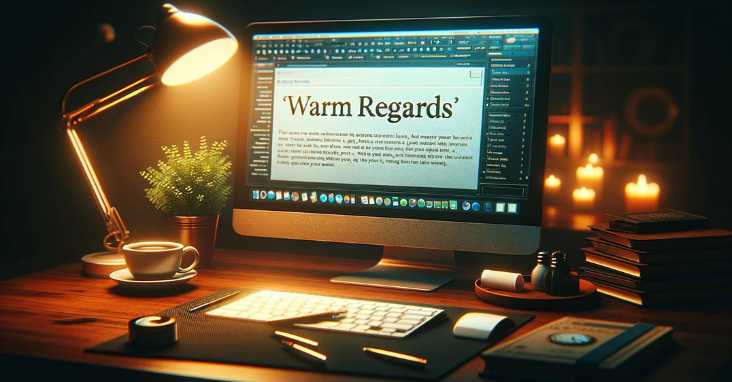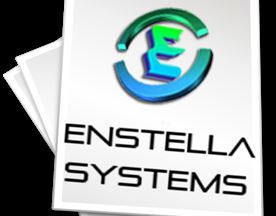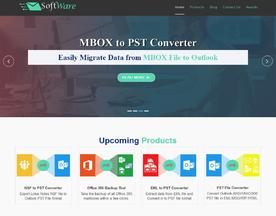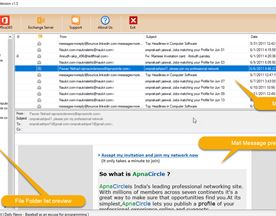What is warm regards meaning in the context of email sign offs? “Warm regards” in email sign-offs conveys friendliness and professionalism, adding a personal touch to your message.
Warm regards is a commonly used phrase in email communication, particularly in business settings. It is a way to convey a sense of friendliness and goodwill towards the recipient, while also maintaining a professional tone. However, the meaning and significance of warm regards can vary depending on the context and relationship between the sender and receiver.

Warm Regards Meaning
Warm regards is a sign-off phrase used at the end of an email message, typically before the sender’s name or signature. It is a way to express gratitude, appreciation, or respect towards the recipient, and to create a positive impression. The phrase is often used in business communication, but can also be used in personal emails or other types of written correspondence.
The Role of Warm Regards in Communication
Warm regards can play an important role in communication, as it can help to establish and maintain positive relationships between the sender and receiver. By using warm regards, the sender can convey a sense of sincerity and goodwill, which can help to build trust and rapport. Additionally, using warm regards can help to create a more positive and enjoyable communication experience for both parties involved.
Key Takeaways
- Warm regards is a common sign-off phrase used in email communication, particularly in business settings.
- The meaning and significance of warm regards can vary depending on the context and relationship between the sender and receiver.
- Using warm regards can help to establish and maintain positive relationships, convey sincerity and goodwill, and create a more positive communication experience.
Warm Regards Meaning
Definition and Usage
Regards” is a common way to sign off on a professional email or letter, but what does it mean when someone adds “warm” to the mix? “Warm regards” is a friendly and slightly more personal way of ending a message. It conveys a sense of kindness and comfort, and is often used when the sender wants to show appreciation or build a stronger connection with the recipient.
The word “warm” in this context doesn’t necessarily refer to temperature. Instead, it’s a metaphor for the emotional tone of the message. Adding “warm” to “regards” injects a bit of personality and warmth into an otherwise formal closing.
Cultural Context
The use of “warm regards” can vary depending on cultural context. In some cultures, it’s common to use more formal language in professional settings, while in others, a more casual tone is preferred. In the United States, “warm regards” is generally considered a friendly and appropriate way to sign off on an email or letter, particularly in business settings.
It’s worth noting that the use of “warm regards” can also depend on the relationship between the sender and recipient. For example, it might be more appropriate to use a more formal closing with someone you don’t know well or with whom you have a strictly professional relationship.
Overall, “warm regards” is a versatile and friendly way to sign off on a message. It conveys a sense of warmth and kindness, and can help build stronger connections between people. For more information on email etiquette, check out this resource.
The Role of Warm Regards in Communication
In today’s fast-paced world, communication is key. Whether it’s email, professional correspondence, or personal messages, it is important to convey respect and thought in every message. One way to do this is by using warm regards.
Email Etiquette
Email is one of the most common forms of communication in the professional world. When sending an email, it is important to use proper email etiquette. This includes using a professional tone and greeting, avoiding slang or abbreviations, and ending the email with warm regards.
Using warm regards at the end of an email shows that the sender is respectful and values the relationship with the recipient. It also adds a personal touch to an otherwise formal message.
Professional Correspondence
In professional correspondence, such as business letters or memos, warm regards can be used to convey respect and appreciation. By using warm regards, the sender is acknowledging the recipient and their contributions to the organization.
It is important to note that warm regards should only be used in appropriate situations. For example, if the correspondence is regarding a serious issue, such as a complaint or legal matter, warm regards may not be appropriate.
Personal Messages
In personal messages, such as text messages or social media posts, warm regards can be used to show appreciation and affection. This can be especially important in long-distance relationships or when communicating with someone who may be going through a difficult time.
Overall, warm regards play an important role in communication. They convey respect, appreciation, and thoughtfulness in every message. By using warm regards, the sender can establish and maintain positive relationships with their recipients.
For more information on email etiquette, visit The Balance Careers.
Different Types of Regards
When ending an email or letter, it is common to use a sign-off such as “Best regards” or “Warm regards.” These sign-offs can vary in tone and formality depending on the context of the message. Here are some examples of different types of regards:
Best Regards vs Warm Regards
“Best regards” is a common sign-off that is appropriate for both formal and informal emails. It is a polite way to end a message and shows that the sender is respectful and professional.
On the other hand, “Warm regards” is a more casual sign-off that is often used in friendly or personal emails. It conveys a sense of warmth and friendliness, and is less formal than “Best regards.”
Casual vs Formal Sign-Offs
In addition to “Best regards” and “Warm regards,” there are many other sign-offs that can be used in different contexts. For example, “Kind regards” is a more formal version of “Warm regards,” and is often used in business emails.
“Sincerely” is another common sign-off that can be used in both formal and informal emails. It is a simple and straightforward way to end a message, and is appropriate for a wide range of contexts.
When choosing a sign-off, it is important to consider the tone and formality of the message. For a casual email to a friend or family member, a sign-off such as “Take care” or “Cheers” may be more appropriate. However, for a formal business email, a more formal sign-off such as “Yours sincerely” or “Yours faithfully” may be necessary.
For more information on email sign-offs and etiquette, check out this article from the Business Writing Blog.
Crafting the Perfect Sign-Off
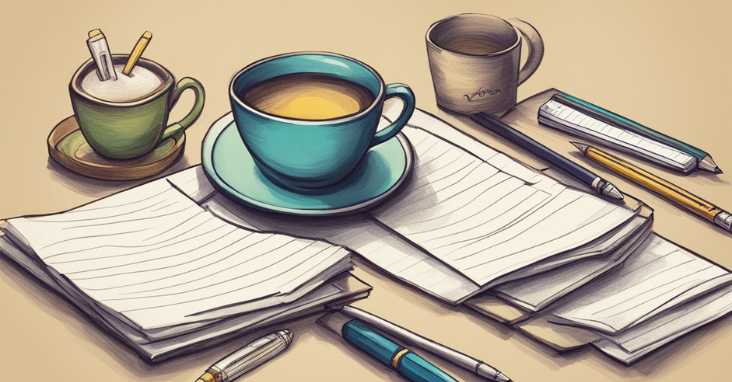
When it comes to ending an email or letter, the sign-off is just as important as the content of the message. A sign-off, also known as a valediction, is the closing phrase or word used to convey the writer’s regards or sentiments to the recipient. One of the most commonly used sign-offs is “Warm Regards.” In this section, we will explore when to use “Warm Regards” and suggest some alternatives.
When to Use Warm Regards
“Warm Regards” is a versatile sign-off that can be used in both personal and professional contexts. It is appropriate for emails or letters to colleagues, clients, or acquaintances. The phrase conveys a sense of warmth and friendliness, while still maintaining a professional tone.
However, it is important to use “Warm Regards” only when the relationship with the recipient is amicable and cordial. If the email or letter is formal or the relationship is strictly professional, a more formal sign-off may be more appropriate.
Alternatives to Warm Regards
While “Warm Regards” is a popular sign-off, there are many other options to choose from. Some alternatives include:
- Best regards
- Kind regards
- Sincerely
- Respectfully
- Yours truly
Each of these sign-offs has a slightly different tone and conveys a different level of professionalism. For example, “Best regards” is a bit more formal than “Warm Regards,” while “Yours truly” is a very formal sign-off typically reserved for business letters.
It is important to choose a sign-off that matches the tone of the email or letter and the relationship with the recipient. If in doubt, it is always better to err on the side of formality.
To learn more about crafting the perfect sign-off, check out this article from The Balance Careers, a trusted resource for career and workplace advice.
Implications of Warm Regards in Business

In business correspondence, the closing salutation is an important aspect that can leave a lasting impression on the recipient. The phrase “Warm Regards” is a popular closing salutation that has gained popularity in recent years. This section will explore the implications of using “Warm Regards” in business, with a focus on client relationships and building professional rapport.
Client Relationships
Using “Warm Regards” in business correspondence can have a positive impact on client relationships. It conveys a sense of warmth and sincerity, which can help build trust and foster a sense of loyalty. Clients are more likely to respond positively to a message that ends with “Warm Regards” than one that ends with a more formal closing, such as “Sincerely” or “Best Regards.”
When ending a letter to a client, using “Warm Regards” can also help to humanize the relationship. It shows that the sender is not just a faceless entity, but a real person who cares about the client’s well-being. This can be particularly important in industries where personal relationships are key, such as financial planning or real estate.
Building Professional Rapport
In addition to client relationships, using “Warm Regards” can also help build professional rapport. It can be a useful tool for networking and building connections within the industry. When sending an email to a potential business partner or colleague, using “Warm Regards” can help to establish a friendly tone and make the recipient feel more comfortable.
However, it is important to note that there are situations where using “Warm Regards” may not be appropriate. For example, when sending a formal complaint or addressing a sensitive issue, a more formal closing may be more appropriate. It is important to consider the context and tone of the message before deciding on a closing salutation.
In conclusion, using “Warm Regards” in business correspondence can have a positive impact on client relationships and professional rapport. It conveys a sense of warmth and sincerity that can help build trust and foster connections within the industry. However, it is important to use it appropriately and considerately, taking into account the context and tone of the message. For more information on business communication and etiquette, visit The Emily Post Institute.
Conveying Sincerity and Goodwill

In professional communication, using a sign-off that conveys sincerity and goodwill is essential. It is a way to show respect and appreciation for the recipient of the message, and it can help to establish a positive relationship between the parties involved. In this section, we will explore two key aspects of conveying sincerity and goodwill in sign-offs: authenticity and wishing well.
Authenticity in Sign-Offs
One of the most important aspects of a sign-off is authenticity. It is essential to choose a sign-off that feels genuine and appropriate for the situation. For example, if someone is ending an email to a colleague, “Take care” or “Best wishes” might be appropriate. These sign-offs are friendly and professional, but not too formal.
On the other hand, if someone is ending an email to a client or a supervisor, it might be more appropriate to use a sign-off such as “Thanks” or “Best regards.” These sign-offs are still friendly, but they are also more formal and show respect for the recipient.
It is important to note that authenticity is key. If a sign-off feels forced or insincere, it can actually have the opposite effect and damage the relationship between the parties involved.
Wishing Well in Professional Contexts
Another important aspect of conveying sincerity and goodwill in sign-offs is wishing well. This means that the sign-off should include a message that wishes the recipient well in some way. For example, “Good luck with your project” or “Stay safe and well” are both sign-offs that convey a sense of caring and goodwill.
In professional contexts, it is important to choose a sign-off that is appropriate for the situation. For example, “Good luck with your project” might be appropriate if someone is ending an email to a colleague who is working on a specific project. However, it might not be appropriate to use this sign-off in a more formal context, such as an email to a client.
Overall, choosing a sign-off that conveys sincerity and goodwill is an important aspect of professional communication. By being authentic and wishing well, it is possible to establish positive relationships and show respect for the recipient. For more information on choosing the right sign-off, check out this article from Grammarly, which provides helpful tips and examples.
Email Signature Personalization
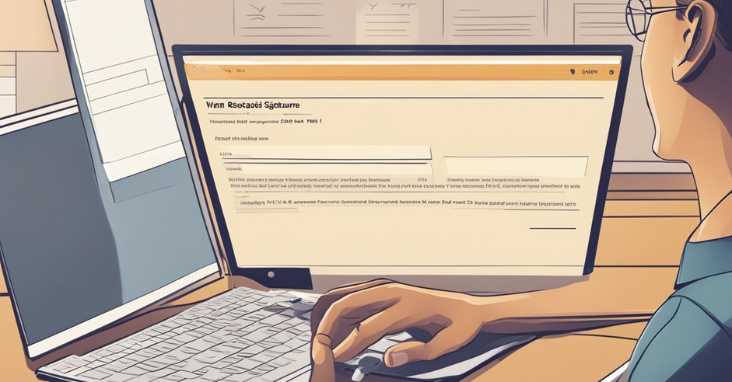
Personalizing email signatures is a great way to make a lasting impression on your recipients. It shows that you care about the details and are willing to go the extra mile to make your emails stand out. Here are some tips on how to incorporate warm regards into your email signature and make it more creative.
Incorporating Warm Regards
One of the most common ways to incorporate warm regards into an email signature is by using phrases such as “Best regards,” “Warm regards,” or “Kind regards.” These phrases are professional, yet friendly, and they convey a sense of warmth and sincerity.
Another way to incorporate warm regards is by using emoticons. For example, you can add a smiley face or a heart at the end of your signature to show that you are approachable and friendly. However, it’s important to use emoticons sparingly and only in appropriate situations.
Creative Signatures
If you want to make your email signature more creative, there are many ways to do so. One option is to include a quote that reflects your personality or your brand. This can be a great way to show your recipients that you are thoughtful and insightful.
Another option is to include a link to your social media profiles or your website. This can be a great way to promote your brand and make it easier for your recipients to connect with you.
Finally, you can add a personal touch to your signature by including a handwritten signature or a personalized image. This can be a great way to show your recipients that you are a real person and not just a faceless email address.
Overall, personalizing your email signature is a great way to make your emails stand out and show your recipients that you care about the details. With these tips, you can incorporate warm regards into your signature and make it more creative and memorable. For more information on email signature personalization, check out this resource, which provides additional tips and best practices.
Frequently Asked Questions

What does the phrase ‘warm regards’ imply when concluding a message?
‘Warm regards’ is a closing phrase that conveys warmth, friendliness, and sincerity. It is a way of expressing positive feelings towards the recipient of the message, while also maintaining a professional tone. It is often used to conclude emails or letters, and is a more personal alternative to the more formal ‘best regards’ or ‘sincerely’.
Is ‘warm regards’ an appropriate sign-off for professional emails?
Yes, ‘warm regards’ is an appropriate sign-off for professional emails, especially when the sender has an established relationship with the recipient. However, it may not be suitable for more formal or serious correspondence, where a more formal closing phrase would be more appropriate.
How does ‘warm regards’ compare to ‘kind regards’ in terms of warmth and formality?
‘Warm regards’ is generally considered to be a warmer and more personal closing phrase than ‘kind regards’. While both phrases are polite and professional, ‘kind regards’ is more formal and less personal than ‘warm regards’.
Can ‘warm regards’ be used in formal correspondence?
‘Warm regards’ can be used in formal correspondence, but its appropriateness depends on the context and relationship between the sender and recipient. In more formal or serious correspondence, a more formal closing phrase such as ‘yours faithfully’ or ‘respectfully’ may be more appropriate.
What are some alternatives to using ‘warm regards’ as an email closure?
Some alternatives to using ‘warm regards’ as an email closure include ‘best regards’, ‘sincerely’, ‘yours truly’, ‘kind regards’, and ‘all the best’. The choice of closing phrase depends on the context and relationship between the sender and recipient.
What is the warmest way to end a letter?
The warmest way to end a letter depends on the relationship between the sender and recipient. Some warm and personal closing phrases include ‘with love’, ‘warmly’, ‘affectionately’, and ‘fondly’. However, these phrases may not be appropriate for all types of correspondence.
For more information on the meaning and usage of ‘warm regards’, check out this article.

